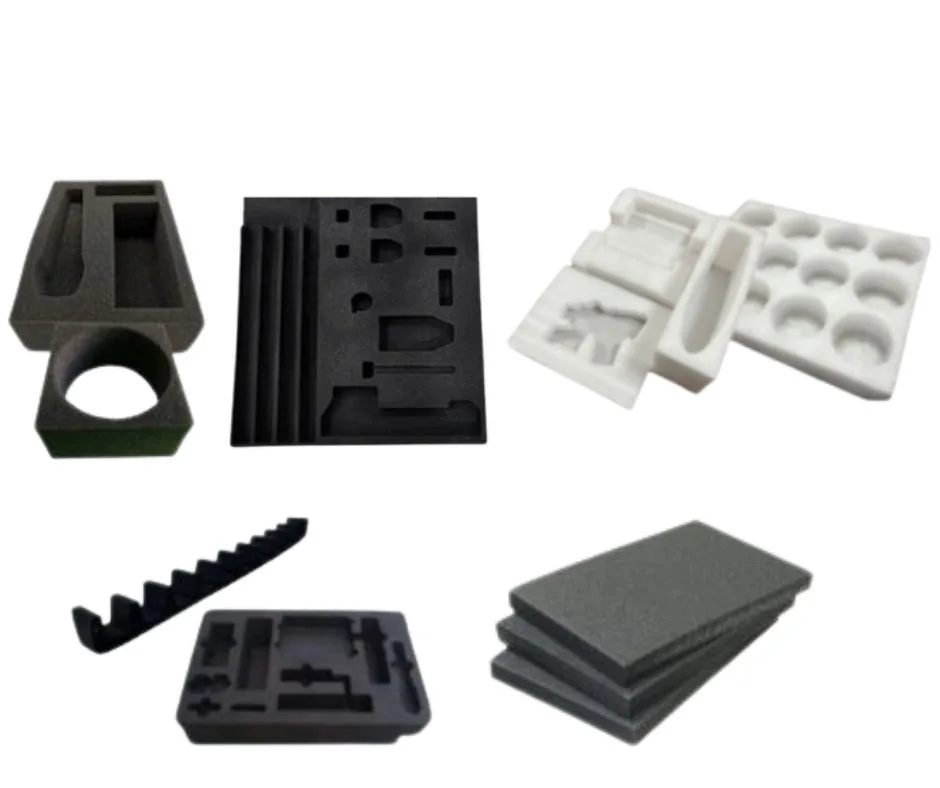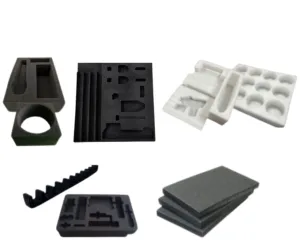
Selecting the appropriate foam for protective packaging is crucial for maintaining the integrity and safety of your products. As a prominent packaging product manufacturer in Gujarat, Shanti Polymers recognizes that navigating the variety of foam options can be complex. This guide will help you evaluate the most common types of foam—EPE, EVA, PU, EPDM, and XLPE—by examining their protection levels, flexibility, and cost.

1. Expanded Polyethylene (EPE)
Protection Level
EPE foam is lightweight yet offers excellent cushioning, making it ideal for protecting delicate items during transportation.
Flexibility
This foam type is highly flexible and easily conforms to different shapes, which makes it suitable for a wide array of applications.
Cost
EPE foam is generally affordable, providing an economical solution that doesn’t compromise on quality.
2. Ethylene Vinyl Acetate (EVA)
Protection Level
EVA foam is known for its superior cushioning and shock absorption properties, making it an excellent choice for high-value products requiring additional protection.
Flexibility
While EVA is somewhat more rigid than EPE, it still maintains a reasonable level of flexibility, striking a balance between strength and adaptability.
Cost
EVA typically costs a bit more than EPE, but it remains a cost-effective option for numerous applications.
3. Polyurethane (PU)
Protection Level
PU foam delivers exceptional cushioning and durability, making it suitable for both industrial and consumer products, including furniture and automotive components.
Flexibility
PU foam is recognized for its great flexibility, allowing it to maintain its shape even after repeated use, providing a more luxurious feel compared to other foam types.
Cost
While PU foam tends to be pricier than EPE and EVA, its performance and longevity often justify the investment for premium applications.
4. Ethylene Propylene Diene Monomer (EPDM)
Protection Level
EPDM foam is well-regarded for its weather resistance and is often utilized in outdoor settings. While it provides decent cushioning, it excels in environments with moisture and temperature variations.
Flexibility
Although EPDM is less flexible than EPE and EVA, it offers outstanding resilience and longevity, particularly in harsh conditions.
Cost
EPDM foam is usually more expensive, but its durability in extreme environments makes it a worthwhile investment.
5. Cross-Linked Polyethylene (XLPE)
Protection Level
XLPE foam is designed for high-density protection and is highly resistant to moisture and chemicals, making it particularly suitable for sensitive electronic devices and equipment.
Flexibility
While XLPE is less flexible than EPE, it still provides sufficient adaptability for various applications, especially those requiring thermal insulation.
Cost
XLPE is generally more costly than EPE and EVA, but its superior protective qualities often make it the preferred choice for specialized applications.
Summary Table
| Foam Type | Protection Level | Flexibility | Cost |
| EPE | Good | High | Low |
| EVA | Excellent | Moderate | Moderate |
| PU | Exceptional | High | High |
| EPDM | Good | Low | High |
| XLPE | High | Moderate | High |
Conclusion
Picking the right foam for your protective packaging needs is essential for ensuring the safety of your products. As a trusted packaging product manufacturer in Gujarat, Shanti Polymers is dedicated to helping you make informed decisions. Whether your focus is on protection, flexibility, or cost, understanding the differences between EPE, EVA, PU, EPDM, and XLPE will assist you in selecting the best foam for your specific requirements.
If you have any further questions or need assistance in choosing the right foam for your packaging needs, please reach out to us at Shanti Polymers. Your product’s safety is our top priority!
